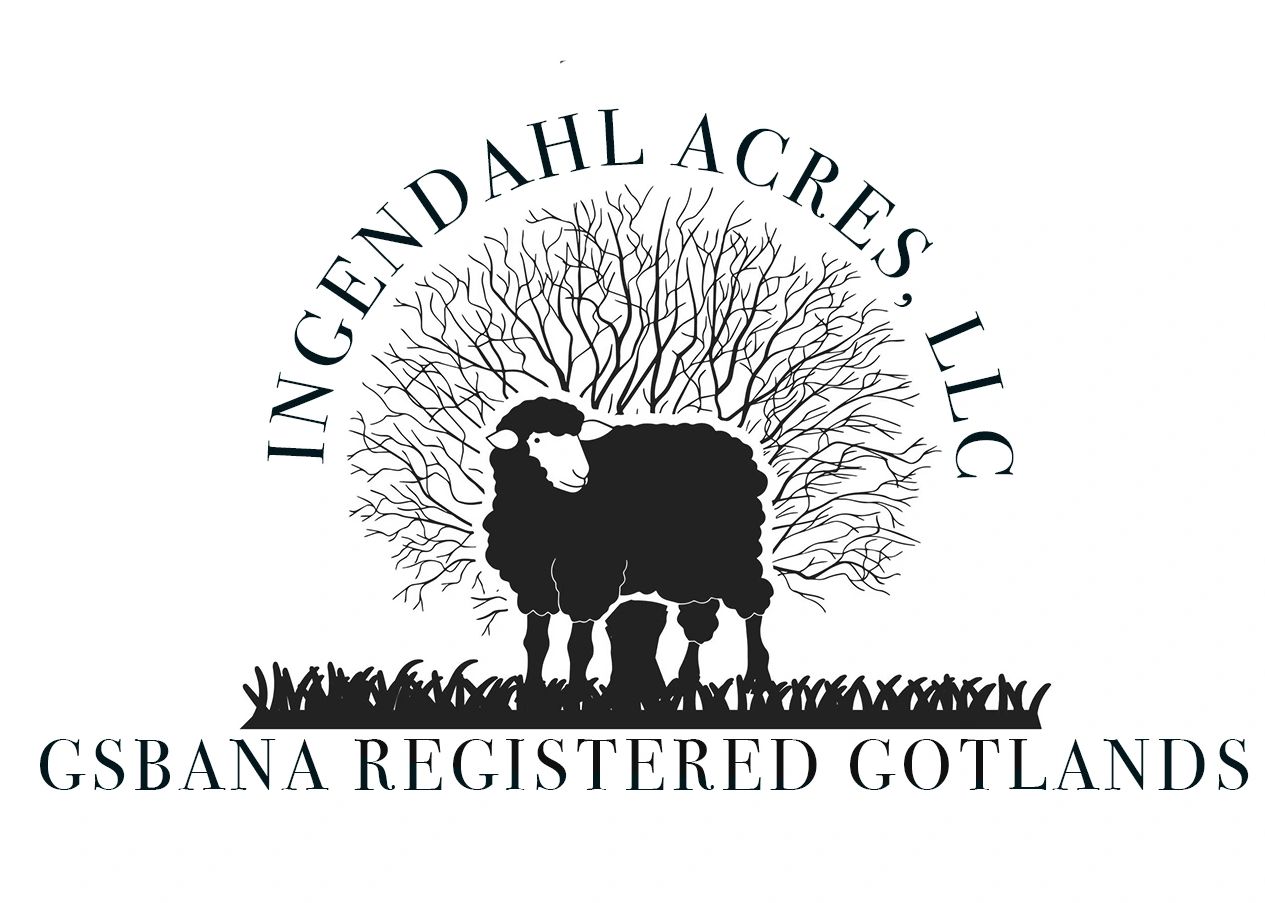
Gotland Sheep
Below is some information about one of our favorite breeds.

Breed Origin
The breed was first established on the Swedish island of Gotland by the Vikings with Karakul and Romanov sheep brought back from expeditions deep into Russia and crossed with the native landrace sheep. The Gotland's developed were selected for curl and color beginning in 1920. The breed is primarily gray.
Looking to produce sheep with no horns and a better fleece, Swedish farmers crossed the Gute sheep with Karakul sheep from Central Asia (a hornless breed known for their long curly fleeces) and Romanov sheep from Russia (a hardy, cold weather tolerant breed without horns). This produced sheep with long, silky wool which began to become quite popular when sold as sheepskins. Used for clothing and decor, Gotland sheepskins saw a spike in popularity in other parts of Europe during the 1970s and again in the 1980s when Gotland sheep were imported to the U.K. to develop the flocks needed to meet the rising demand for Gotland sheepskins during those decades.
Although Gotland sheep are still used to produce sheepskins today, an increasing number of Gotland sheep are being raised in order to provide wool for hand spinners, and also for purposes of genetic conservation. Like many primitive sheep breeds, Gotland sheep have unique adaptations to the land they live in, and for Gotland sheep that means being able to drink seawater, and showing a preference for shrubs and tough plants. Not to mention the unique long and lustrous quality of their wool is unlike the wool you might see in the more popular and populous sheep breeds today, such as Merino.
Gotland sheep did not start to arrive in North America until 2003, but it is starting to become a popular breed with small-scale farmers on this continent. It is an easy to care for sheep with a wool that is seeing an increased interest among hand-spinners and other fiber artists. Gotland is a long silky wool that when spun and dyed produces a yarn with a wonderful luster reminiscent of mohair and good drape, with a little bit of a halo. Gotland sheep produce wool in a range of grays from light to dark, with the lighter gray wool being most suitable for dyeing. Soft and comfortable to wear against the skin, most Gotland wool is in the 27-33 micron range, with the lighter colors typically having the lower micron count.
Do Gotland's have good temperaments? Gotland sheep are very inquisitive, making them an entertaining and people interactive breed to own. They are a hardy breed; adaptable to a variety of management systems. They are friendly, calm and there non-flighty manner makes Gotlands the perfect choice for children and families.
Shearing?
Shearing?

Gotlands are born with jet black, silken coats (prized generations ago for fur coats) and change color as they age. Their faces and legs are black with no wool – barrels on toothpicks. A little white on their noggin or around their face is personal preference (although some don't like it) the fleece can range from cream through greys and silver. There is debate as to whether browns are acceptable. In the USA they have white and moorit with bloodlines from Sweden, New Zealand, Denmark and the Netherlands.
Shearing?
Shearing?
Shearing?

Gotland's should be shorn twice a year, once in mid-fall to harvest the long summer curls, and once in the spring after lambing to relieve them of their coarse winter growth. Once shorn we sort and wash their fleece ready for spinning.
Check out this great video below of post-evening feed activities, searching through moms fleece for left over goodies. How exciting!

Gotlands are ideal for all size farms. They can adept well to all types of feed management styles. Just be sure to account for adequte hay intake in the cold months when you cannot rely on pasture.
Meet Our Gotland Flock

"Joe" the ram <<
Joe is GSBANA registered.
Reg Name: ERVALLA Grey Ismael

"Mocha" the ewe
Mocha is GSBANA registered.
Reg Name: NWF Sinead

"Chai" the ewe
Chai is not registered.

"Java" the ewe
Java is dual registered with GASBANA & AGSS.
Reg name: AHF MAX0679

Java's March '25 lambs. ------>

"Latte" the ewe
Latte is unregistered but lineage is traceable.
"Ibrik" the ewe
GSBANA registered.
Photo coming soon!

"Jitter" the ewe
GSBANA registered.
"Kaldi" the ewe
GSBANA registered.
Photo coming soon!
The Granite State Fair '25 w/ Our Gotland Flock!


More Photos
Gotland x Border Leicester Cross - Going on Year 3


Gotland wool.
A *fine-to-medium wool, an adults staple length is typically
between 3 and 7 inches, while *micron counts are between 27 to 34.

Border Leicester wool.
A *medium-type wool with a staple length of 6–10 inches and a *micron count of between 29 to 38.
Crossing these two breeds has been a fun adventure and we've enjoyed the lambs we've seen so far from our brood ewes.
1/4



















